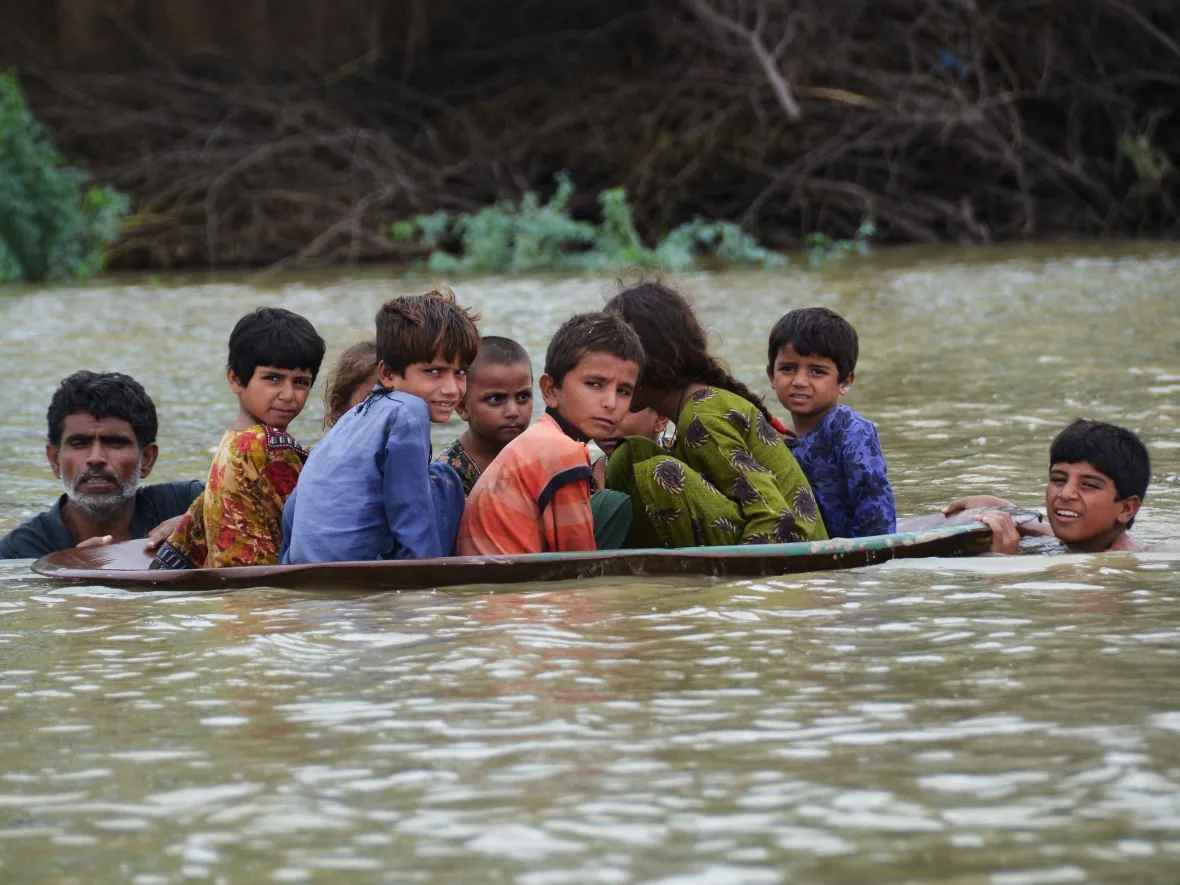- 2022
- 29
- Aug
As an effect of the miserable flood in Pakistan, the rate of inflation is increasing badly. Where the individuals in affected areas are prone to the damages of flood all the other countrymates are getting involved.
Threatening government efforts to counteract economic headwinds might lead to more imports, and fewer exports causing inflation to raise in Pakistan. JS Global Research released a report on Friday stating, "based on our preliminary estimates, the current account deficit may increase by $4.4 billion (1% of GDP) - assuming no counter-measures are taken, while approximately 30% of the CPI (Consumer Price Index) basket is exposed to the threat of higher prices."
- Inflation Raise In Pakistan Due to Recent Flash Floods
Because of the present situation of flood in Pakistan, it is possible that the government will be required to make additional payments of $2.6 billion for cotton, $900 million for wheat, and over $1 billion for missed textile exports. This is equivalent to around $4.5 billion in terms of the world GDP for the fiscal year 2022-2023. As a direct result of the recent flash flood in Pakistan, it is probable that customers may have a difficult time obtaining essential products such as onions, tomatoes, and chili peppers. This scenario is very plausible.
- Cotton has been affected more than other crops
The preceding flood in Pakistan will have a particularly negative impact on cotton production. In the previous fiscal year, farmers in Sindh produced 8 million bales, but this year's harvest will be poor again due to the region's extreme rainfall.
According to reports, the cotton crop in Sindh has been severely damaged because of floods in Pakistan. The cost of cotton imports in fiscal year 23 is projected to be more than $4.4 billion (+144% annually) if the United States has to purchase cotton to meet 80% of its demand this year. If the United States imports enough cotton to cover 80 percent of its demand this year, then the situation is dire.
However, the study's authors concluded that cutting off imports of raw cotton and other forms of unfinished textiles would hurt the country's textile exports.
Sadly, the economy of Pakistan has been badly impacted and it's not going to get recovered immediately it will take a lot of time and more hard work to get back to the previous state. Things have become too destroyed but good faith and continuous hard work could be proven as a key to a bright future in Pakistan.
- Rice is the next crop on the list
It's becoming more likely that the recent flood in Pakistan will cause serious damage to rice and other crops. That's to be expected, of course. Acreage dedicated to the growth of this crop is one of the few items that has considerably risen (plus 20%) over the course of the prior two years. Every year, exports contribute $2.5 billion to the economy.
Damage to rice fields would lead to a drop in exports, a slowdown in GDP growth, and an increase in consumer price inflation. The agricultural sector as a whole will be harmed.
- Farmers would not be able to plant wheat for the Coming seasons
Some estimates put the time it takes for floodwaters triggered by flash floods in Pakistan to begin to recede at three months. The consequences will make it harder to cultivate wheat and other cereals needed to produce edible oils, extending the time it takes to do so. Waiting to plant wheat now would be a terrible idea, as many farmers have already shifted their focus away from wheat and onto edible oil crops.
The environment that remains after a flood may have an impact on wheat production in the long run. Importing the 15 million metric tonnes of wheat that would be required in FY23 might cost a total of $1.7 billion if planting delays continue to occur and wheat import prices continue to rise. That's what would occur if the cost of wheat imports continued rising.
- Loss On Cattle has already been observed
More than half a million animals may have been killed as a result of the floods, on top of the agricultural devastation. Because of this, milk output will go down, causing even more financial stress for rural people already struggling with the rising cost of fuel and fertilizer. It's possible that there won't be enough cattle to go around, and there's also a chance that disease may spread among them. All of these things have the potential to reduce the amount of meat available. It is believed that we're going to face losses on flash and milk production which is a big hit to our economy.
Furthermore, tomato prices have already begun to rise as a result of the impending monsoon. This trend will most likely persist.
- All the businesses are going to get hit by floods
They all make up 18% of the CPI basket's total weight, with milk, meat, wheat, and cooking oil. It has had the highest risk of food inflation (28%) in the last 13 years. If there are food security challenges, shortages, or supply-chain bottlenecks in FY23, our current CPI prediction of 21% will rise." Our best estimates indicate that the oil marketing sector, banks, tractor manufacturers, and fertilizer producers will all take a hit from the storms.
Sadly, due to such conditions, the economy is suffering badly, but few black foxes in the market have used it as money making stunt. Instead of understanding the situation and feeling sympathy for the affected people, prices of commodities have increased more than the impact of inflation so they can make more money in the black market. Even the shelter camp prices have risen up to 15000 PKR rupee because of increasing demand.
Read also Inflation Raise Due to Miserable Floods in Pakistan




